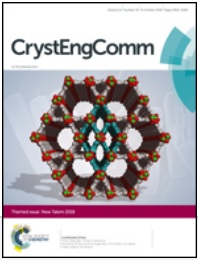Structural determinations as a function of temperature allowed us to model the polar properties of guanidinium iodide, C(NH)2I, in its hexagonal P63mc-symmetric phase. These results have been compared with the experimental data of the pyroelectric measurements. It has been shown that the crystal lattice polarization, arising from the ionic displacements, increases with temperature and abruptly vanishes at the first-order phase transition to the high-temperature phase of monoclinic space group P21/m. Thus, this transition non-typically lowers the crystal symmetry when temperature is increased. Moreover, the polar–non-polar symmetry change, accompanied by the crystal polarization loss, does not occur as a ferroelectric–paraelectric phase transition. This is rather uncommon, but can be rationalized by the reconstructive character of the transition and by the structural hindrances for the polarization reversal in the low-temperature phase. The reconstructive nature of the structural changes and the 3% decrease in the crystal volume can explain a large temperature hysteresis of the transition point, a strong sensitivity to the thermal history of the sample, and the metastable features of the high-temperature phase.

